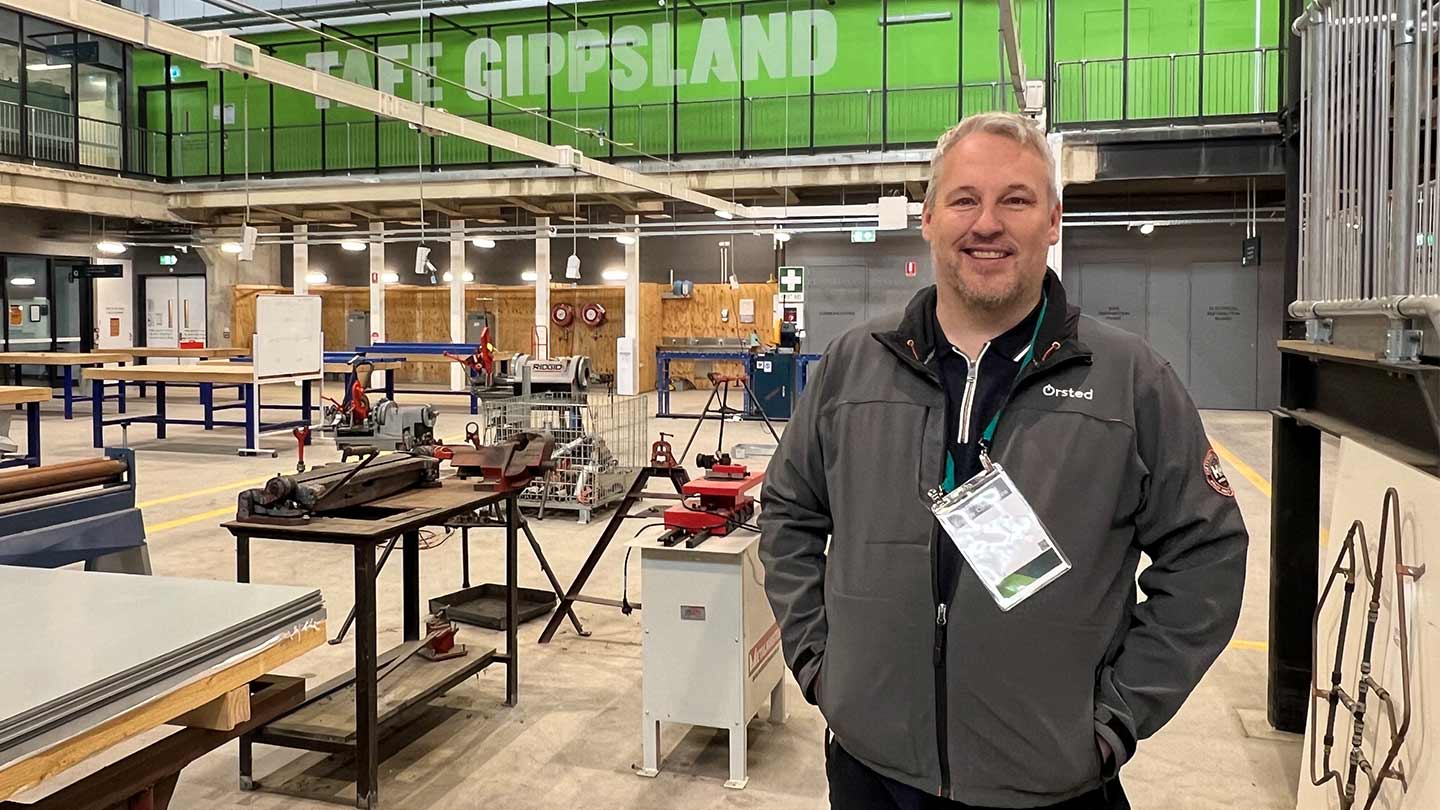Talk us through the transformation you’ve seen in Grimsby
Grimsby was once known for having the world’s largest and busiest fishing port, but many years of post-industrial decline brought about severe economic and social problems. In the last decade, we’ve seen Grimsby totally reinvent itself – this time with a new vision focused on offshore wind and renewable energy. Investments have been flowing in, along new with jobs for retrained oil and gas workers. Now the local community will have access to well-paid jobs in an exciting new industry. It’s been nothing short of transformational.
Ørsted has been in Grimsby since 2014. From the very beginning, we committed to creating opportunities for local people to develop new skills and join the offshore wind industry. Now we have more than 600 people based out of our East Coast hub, working on some of the largest offshore wind projects in the world.
What similarities do you see between Gippsland and Grimsby?
There’s a strong sense of pride and community spirit in both regions. But they also share a certain "pioneering" mentality – you can really feel that the people living in both Gippsland and Grimsby want to be part of something and leave their mark on the world. As coastal towns with a history in industrial fishing, both have the ingredients needed to become thriving offshore wind hubs.
Tell us a bit about the Apprenticeship Program
We created our four-year Apprenticeship Program to attract and recruit young people into the offshore wind industry in Grimsby. Since the program’s conception in 2017, we’ve trained over 70 apprentices with 100% retention rate. The course combines classroom learning and on-the-job experience to teach our young apprentices how to safely operate and maintain offshore wind turbines.
What does a day in the life of an apprentice wind technician look like?
No two days are the same! Some of the work still involves spanners and oily rags, but they might also find themselves flying a drone or analysing data on a computer. It’s a dynamic role with a lot of potential for adventure – they travel to work most days in a helicopter or on a boat.
How important is skill versus education when recruiting local talent?
We prioritise potential over skill. Our apprentices come from a wide range of different backgrounds – from heavy industry and manufacturing to farming to hairdressing – but they are all ambitious and proactive with a love of learning. Some joined us straight from school, while others were already in the workforce and wanted a change of career.
What kind of career paths can this lead to?
One of the best things about our program is that the career path isn’t binary, so our apprentices might go on to specialise in health and safety, project management, technical support or contract negotiation. We even had one apprentice start as a technician and then end up working in the legal team!
How do we give young people the best chance at succeeding in their offshore wind careers?
Strong partnerships are key. We work hand-in-hand with technical colleges and training providers like Technical and Further Education (TAFE) to prepare Australians for this new industry. In the UK, similar partnerships have been invaluable in ensuring our apprentices have the skills they need to succeed. In Gippsland, I met with TAFE professionals who refer to something called the ‘the wrap-around’ effect – that is, arming young people with a range of supplementary skills to help them through both work and life, including advanced first aid and rescue techniques as well as self-awareness and financial literacy. We also provide mentors and access to mental health services.
How do we ensure diversity & inclusion in the recruitment process?
Diversity and inclusion are top of the agenda for us. One-third of Ørsted’s apprentices are women, and we’re constantly striving towards a more equal split. During the recruitment process, we ask would-be apprentices to wear everyday clothes to interviews, as we know that not everyone has a suit in their wardrobe. And we also offer different ways to apply for roles to cater to those who don’t have access to technology.

